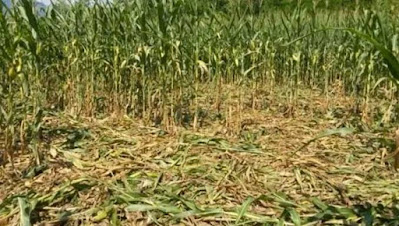Montecarlo has more than a dozen restaurants, all of five-star quality. I wish we had the budget to dine out more often, but we don’t. Besides that, Lucy is an excellent cook in her own right, and furthermore, it is possible to buy restaurant quality meals at a rosticceria, or tavola calda, places which provide what is basically home cooking to carry back to your dining room. We have one of these nearby in San Salvatore, the macelleria of Luigi Bianchi and his family (they will even deliver). And even the prepared food at the supermarkets is great here.
But we do occasionally
dine out, especially when we have visitors, and so we’ve tried about half of
the restaurants. This week we tried one new to us, Ristorante dal Pallini, and
we’d have to call it a new favorite. Considering the high quality of all the
other restaurants, this is a strong statement in its favor. Just what impressed
us so much? I’d have to say it was the welcoming congeniality of the family
that owns and operates the place. The cook, Angiolo, came out of the kitchen to
explain how he prepares his risotto and to show us the fresh porcini mushrooms
that had just been delivered from the Garfagnana. His wife Gloria and son Rumen
checked on us and chatted with us periodically throughout the meal. Our friends
needed gluten-free meals, and Gloria and Angiolo suggested several possibilities.
Angliolo even invited me inside to view his sparkling clean kitchen.
Angiolo shows off the mushrooms that we
will soon be eating.
What can I
say about the food? I am neither a gourmet nor a picky eater, but I can assure you
that it was every bit as fresh, authentic and delicious as the other fine
restaurants in Montecarlo, but a little less expensive. We were fortunate enough
to have picked a perfect day to dine outside, under the shelter of a sun
umbrella, but the restaurant also has ample inside dining space. Perhaps the
greatest drawback (though not for us) is the unusual location. Frankly, we don’t
know how it can compete, because the average visitor to Montecarlo would not
even know it exists. It’s at the end of a moderately rough dirt road outside
the city walls on the west side. Any tourist parking in the main lot would
simply walk down the streets of the historic center and pick one of the more
visible options.
Kathryn digs into some
exquisite risotto ai funghi.
Pallini is about a five-minute walk from the Porta Nuova. Start at the end of via Roma, go down the stairs and continue about 50 meters on a rough and uneven gravel road. At the T, turn right and follow the dirt road about 200 meters. They are open for both lunch and dinner. We hope the word spreads, at least among the locals, of this exceptional restaurant. We’ll do our part to give it some business when our guests ask us out for a meal!
Lucy chose an antipasto misto instead
of a primo piatto.
.jpg)
.jpg)












